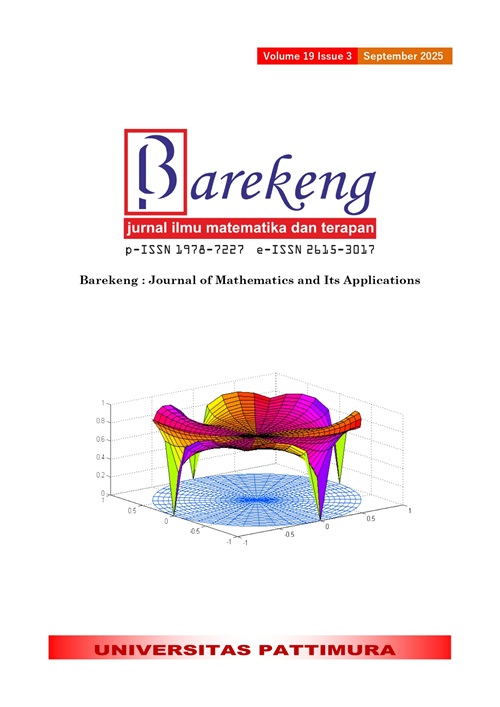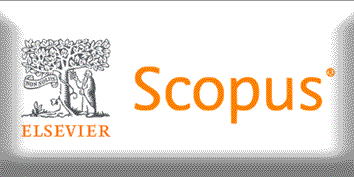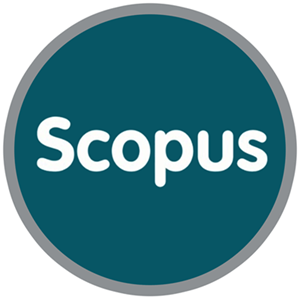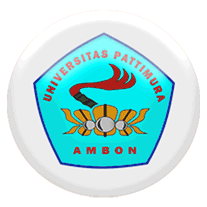PERFORMANCE COMPARISON OF SOME TYPES OF WAVELET TRANSFORMS FOR TOURISM DATA PATTERN APPROXIMATION
Abstract
Tourism is an economic sector that significantly supports the country's foreign exchange, including in West Nusa Tenggara Province (NTB). Data on tourist visits to an area, including to NTB, is a representation of time series data. The wavelet method is one of the tools that is quite reliable for modeling time series data. This study aims to model the number of tourist visits to NTB Province using discrete wavelet transformation decomposition to estimate data. Several Wavelet functions such as Haar wavelet, Symlet, Coiflet, Daubechies, Best-localized Daubechies, Fejér-Korovkin, and Bi-orthogonal Splines at various orders and levels of decomposition became the basis for simulation in modeling data. Based on the Root of Mean of Square Error (RMSE) indicator, this study compares the performance of each wavelet function against the modeling performance at various orders and levels of decomposition. Numerically, for the data on the total number of tourists visiting NTB Province, the best approximation was given by the Fejér-Korovkin wavelet order 4-th (fk4) and the best-localized Daubechies wavelet order 7-th (bl7) at the 2-nd level with an RMSE value of 2.2993 × 10-11. Partially, the best approximation of the data on the number of foreign tourist visits was given by the Bi-orthogonal Splines wavelet type order 2.6 (bior2.6) at the 2nd decomposition level with an RMSE value of 1.1718 × 10-11 and for the data on domestic tourist visits was given by the Fejér-Korovkin wavelet type order 4-th (fk4) and the best-localized Daubechies wavelet order 7-th (bl7) at the 2nd level with an RMSE value of 1.3352 × 10-11.
Downloads
References
NTB Tourism Office, “GOVERNMENT TOURISM OFFICE.” Accessed: Feb. 05, 2022. [Online]. Available: https://data.ntbprov.go.id/group/dinas-pariwisata.
S. Bahri, “DESAIN DAN EVALUASI PERFORMA MODEL WAVELET NEURAL NETWORK UNTUK PEMODELAN,” Ph.D. Dissertation, Gadjah Mada University Indonesia, 2017.
A. Banakar and M. F. Azeem, “CASE STUDY: TIME SERIES PREDICTION,” Neural Networks, vol. 0, no. September, pp. 621–625, 2006.doi: https://doi.org/10.1109/IS.2006.348491
X. Li, R. Law, G. Xie, and S. Wang, “REVIEW OF TOURISM FORECASTING RESEARCH WITH INTERNET DATA,” Apr. 01, 2021, Elsevier Ltd. doi: https://doi.org/10.1016/j.tourman.2020.104245.
E. Park, J. Park, and M. Hu, “TOURISM DEMAND FORECASTING WITH ONLINE NEWS DATA MINING,” Ann Tour Res, vol. 90, Sep. 2021, doi: https://doi.org/10.1016/j.annals.2021.103273.
J. Wu-Bi, H. Li, and Z. P. Fan, “TOURISM DEMAND FORECASTING WITH TIME SERIES IMAGING: A DEEP LEARNING MODEL,” Ann Tour Res, vol. 90, Sep. 2021, doi: https://doi.org/10.1016/j.annals.2021.103255.
G. Xie, Y. Qian, and S. Wang, “Forecasting Chinese cruise tourism demand with big data: An optimized machine learning approach,” Tour Manag, vol. 82, Feb. 2021, doi: 10.1016/j.tourman.2020.104208.
M. Akin, “A NOVEL APPROACH TO MODEL SELECTION IN TOURISM DEMAND MODELING,” Tour Manag, vol. 48, pp. 64–72, Jun. 2015, doi: https://doi.org/10.1016/j.tourman.2014.11.004
D. Santamaria and G. Filis, “TOURISM DEMAND AND ECONOMIC GROWTH IN SPAIN: NEW INSIGHTS BASED ON THE YIELD CURVE,” Tour Manag, vol. 75, pp. 447–459, Dec. 2019, doi: https://doi.org/10.1016/j.tourman.2019.06.008.
M. R. Susila, “PEMODELAN MULTIVARIATE KUNJUNGAN WISATAWAN MANCANEGARA KE INDONESIA MELALUI PINTU UDARA, LAUT, DAN DARAT YANG MELIBATKAN DAMPAK WABAH COVID-19,” BAREKENG: Jurnal Ilmu Matematika dan Terapan, vol. 15, no. 3, pp. 467–478, Sep. 2021, doi: https://doi.org/10.30598/barekengvol15iss3pp467-478.
B. S. Pratama, A. F. Suryono, N. Auliyah, and N. Chamidah, “COMPARISON OF LOCAL POLYNOMIAL REGRESSION AND ARIMA IN PREDICTING THE NUMBER OF FOREIGN TOURIST VISITS TO INDONESIA,” BAREKENG: Jurnal Ilmu Matematika dan Terapan, vol. 18, no. 1, pp. 0053–0064, Mar. 2024, doi: https://doi.org/10.30598/barekengvol18iss1pp0043-0052.
I. R. Julianto, Indwiarti, and A. Atiqi Rohmawati, “PREDIKSI JUMLAH KUNJUNGAN WISATAWAN DI JAWA BARAT DENGAN MODEL ARIMAX DAN SARIMAX MENGGUNAKAN DATA GOOGLE TRENDS,” E-Proceeding of Engineering.
J. R. Lakuhati, A. P. Paulus, and C. B. D. Pakasi, “FAKTOR-FAKTOR YANG MEMPENGARUHI KUNJUNGAN WISATAWAN KE KAWASAN EKOWISATA DI DESABAHOI KECAMATAN LIKUPANG BARAT KABUPATEN MINAHASA UTARA,” vol. 14, no. 1, pp. 215–222, 2018.doi: https://doi.org/10.35791/agrsosek.14.1.2018.19268
E. N. Kencana and T. Darmayanti, “ANALISIS STRUKTURAL MODEL KUNJUNGAN ULANG WISATAWAN KE KABUPATEN BADUNG,” Bali: Prosiding Seminar Nasional Saintek, Nov. 2016.
C. Li, P. Ge, Z. Liu, and W. Zheng, “Forecasting tourist arrivals using denoising and potential factors,” Ann Tour Res, vol. 83, 2020, doi: https://doi.org/10.1016/j.annals.2020.102943.
M. C. Mariani, M. A. M. Bhuiyan, O. K. Tweneboah, M. P. Beccar-Varela, and I. Florescu, “ANALYSIS OF STOCK MARKET DATA BY USING DYNAMIC FOURIER AND WAVELETS TECHNIQUES,” Physica A: Statistical Mechanics and its Applications, vol. 537, 2020, doi: https://doi.org/10.1016/j.physa.2019.122785.
B. E. Bayih and A. Singh, “MODELING DOMESTIC TOURISM: MOTIVATIONS, SATISFACTION AND TOURIST BEHAVIORAL INTENTIONS,” Heliyon, vol. 6, no. 9, 2020, doi: https://doi.org/10.1016/j.heliyon.2020.e04839.
B. O. Osu, C. U. Okonkwo, P. U. Uzoma, and E. E. Akpanibah, “WAVELET ANALYSIS OF THE INTERNATIONAL MARKETS: A LOOK AT THE NEXT ELEVEN (N11),” Sci Afr, vol. 7, 2020, doi: https://doi.org/10.1016/j.sciaf.2020.e00319.
J. Montaño, J. Rosselló, and A. Sansó, “A NEW METHOD FOR ESTIMATING TOURISTS’ LENGTH OF STAY,” Tour Manag, vol. 75, 2019, doi: https://doi.org/10.1016/j.tourman.2019.04.009.
D. Novita, T. Herlambang, V. Asy’ari, A. Alimudin, and H. Arof, “COMPARISON OF K-NEAREST NEIGHBOR AND NEURAL NETWORK FOR PREDICTION INTERNATIONAL VISITOR IN EAST JAVA,” BAREKENG: Jurnal Ilmu Matematika dan Terapan, vol. 18, no. 3, pp. 2057–2070, Jul. 2024, doi: https://doi.org/10.30598/barekengvol18iss3pp2057-2070.
J. G. Brida, B. Lanzilotta, L. Moreno, and F. Santiñaque, “A NON-LINEAR APPROXIMATION TO THE DISTRIBUTION OF TOTAL EXPENDITURE DISTRIBUTION OF CRUISE TOURISTS IN URUGUAY,” Tour Manag, vol. 69, 2018, doi: https://doi.org/10.1016/j.tourman.2018.05.006.
A. Vyas, S. Yu, and J. Paik, “WAVELETS AND WAVELET TRANSFORM,” 2018, pp. 45–92. doi: https://doi.org/10.1007/978-981-10-7272-7_3.
C. M. Akujuobi, WAVELETS AND WAVELET TRANSFORM SYSTEMS AND THEIR APPLICATIONS: A DIGITAL SIGNAL PROCESSING APPROACH. 2022. doi: https://doi.org/10.1007/978-3-030-87528-2.
M. Misiti, Y. Misiti, G. Oppenheim, J.-M. Poggi, and MathWorks, “WAVELET TOOLBOX USER’S GUIDE,” The MathWorks, Inc, 2015.
M. Mehra, WAVELET THEORY AND ITS APPLICATIONS. Springer Nature Singapore Pte Ltd., 2018. doi: https://doi.org/10.1007/978-1-4615-3584-3.
M. Unser, “TEN GOOD REASONS FOR USING SPLINE WAVELETS,” Proc. SPIE, 1997.
BPS NTB, “West Nusa Tenggara Province in Figures, 2008-2022,” https://ntb.bps.go.id /id/publication.
Ministry of Tourism and Creative Economy, “GET ACQUAINTED WITH 5 SUPER PRIORITY DESTINATIONS IN INDONESIA,” www://info5dsp.Kemenparekraf.go.id.
E. A. MAHARAJ, “USING WAVELETS TO COMPARE TIME SERIES PATTERNS,” Int J Wavelets Multiresolut Inf Process, vol. 03, no. 04, 2005, doi: https://doi.org/10.1142/s0219691305000993.
Copyright (c) 2025 Syamsul Bahri, Lailia Awalushaumi, Bulqis Nebulla Syechah, Satriawan Pradana

This work is licensed under a Creative Commons Attribution-ShareAlike 4.0 International License.
Authors who publish with this Journal agree to the following terms:
- Author retain copyright and grant the journal right of first publication with the work simultaneously licensed under a creative commons attribution license that allow others to share the work within an acknowledgement of the work’s authorship and initial publication of this journal.
- Authors are able to enter into separate, additional contractual arrangement for the non-exclusive distribution of the journal’s published version of the work (e.g. acknowledgement of its initial publication in this journal).
- Authors are permitted and encouraged to post their work online (e.g. in institutional repositories or on their websites) prior to and during the submission process, as it can lead to productive exchanges, as well as earlier and greater citation of published works.






1.gif)



